This topic explains how to create a workbook in Quick BI Pro and Professional Edition group spaces.
Prerequisites
You have created a dataset. For more information, see Create and Manage Datasets.
Start the configuration
After navigating to the or the international Quick BI console, you can create a new workbook on the Workbench using the following methods.
There are five methods to create a new workbook:
Method 1: Create an ad hoc query from Quick Start on the Workbench tab outside a workspace
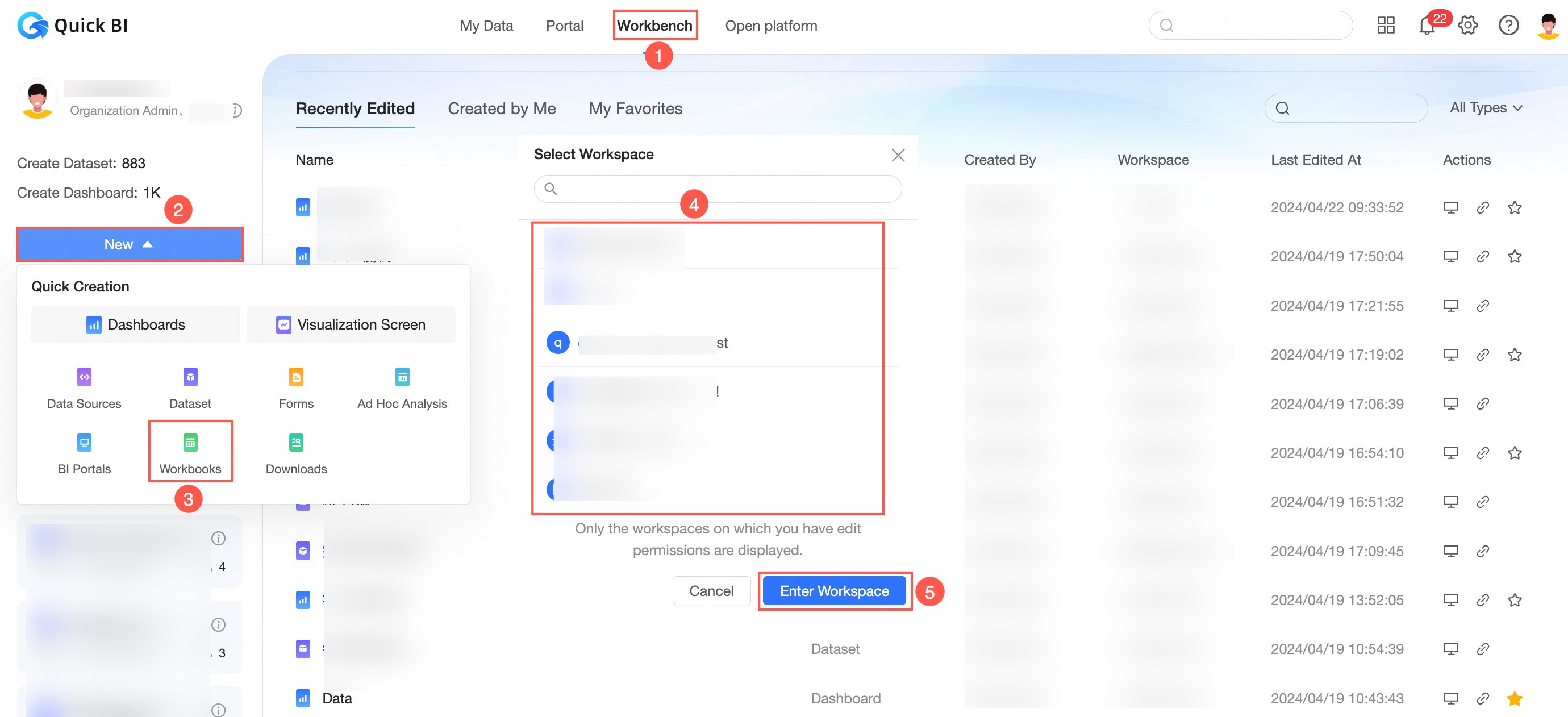
Method 2: Create an ad hoc query in the left-side navigation pane of the Workbench tab within a workspace
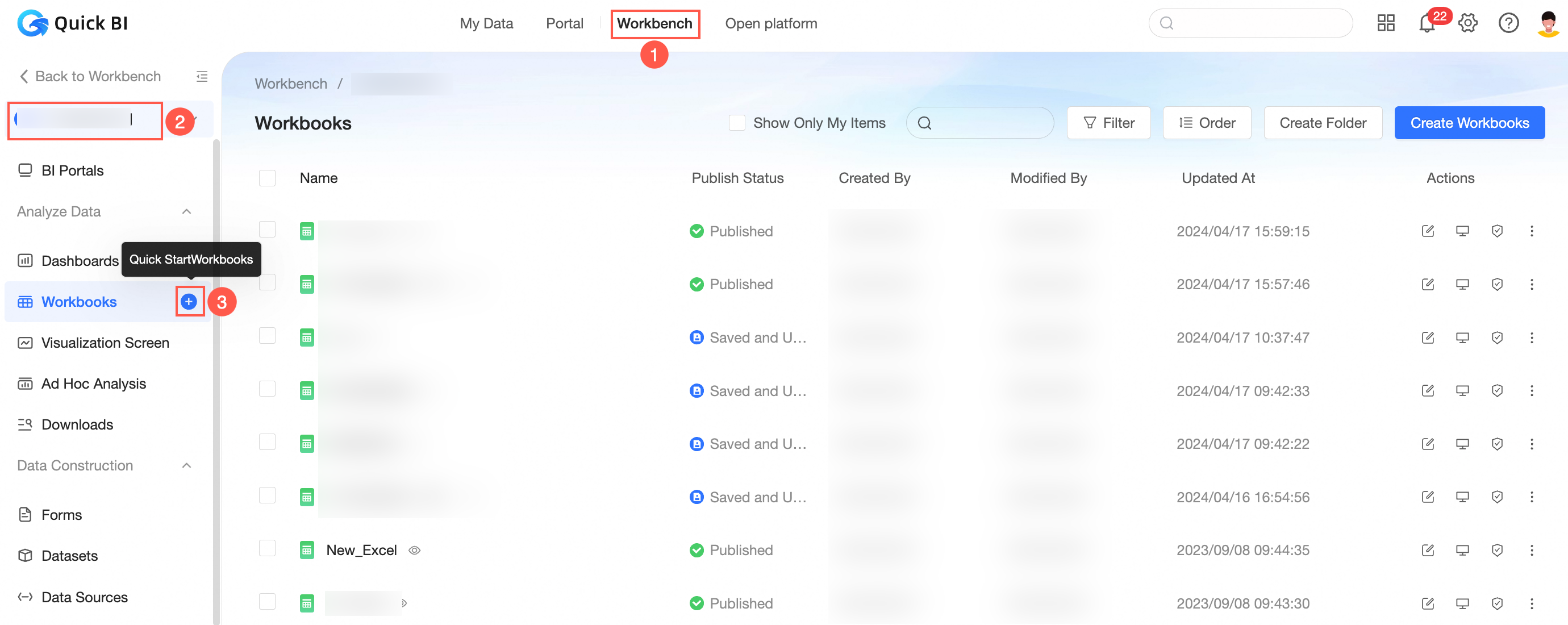
Method 3: Create from the workbook module within a workspace
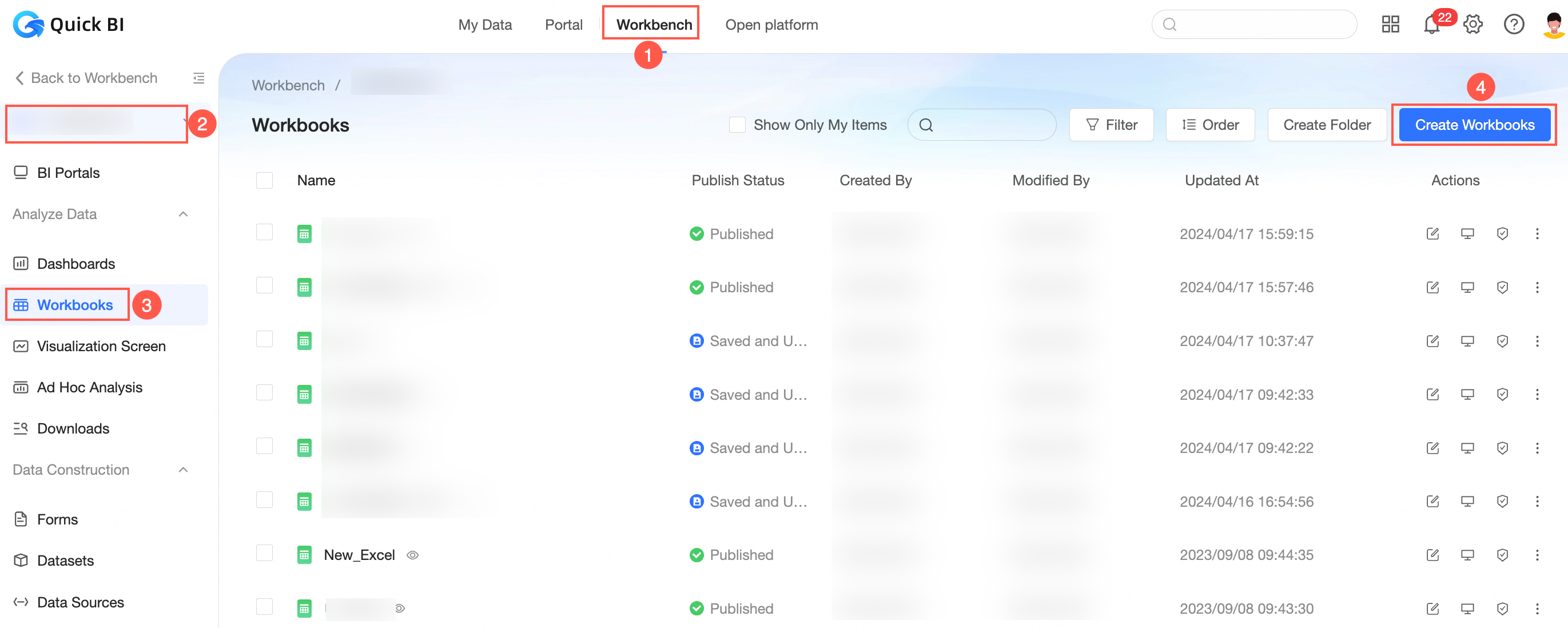
When you create a workbook using the first three methods, no dataset is selected by default. You must select a dataset on the editing page.
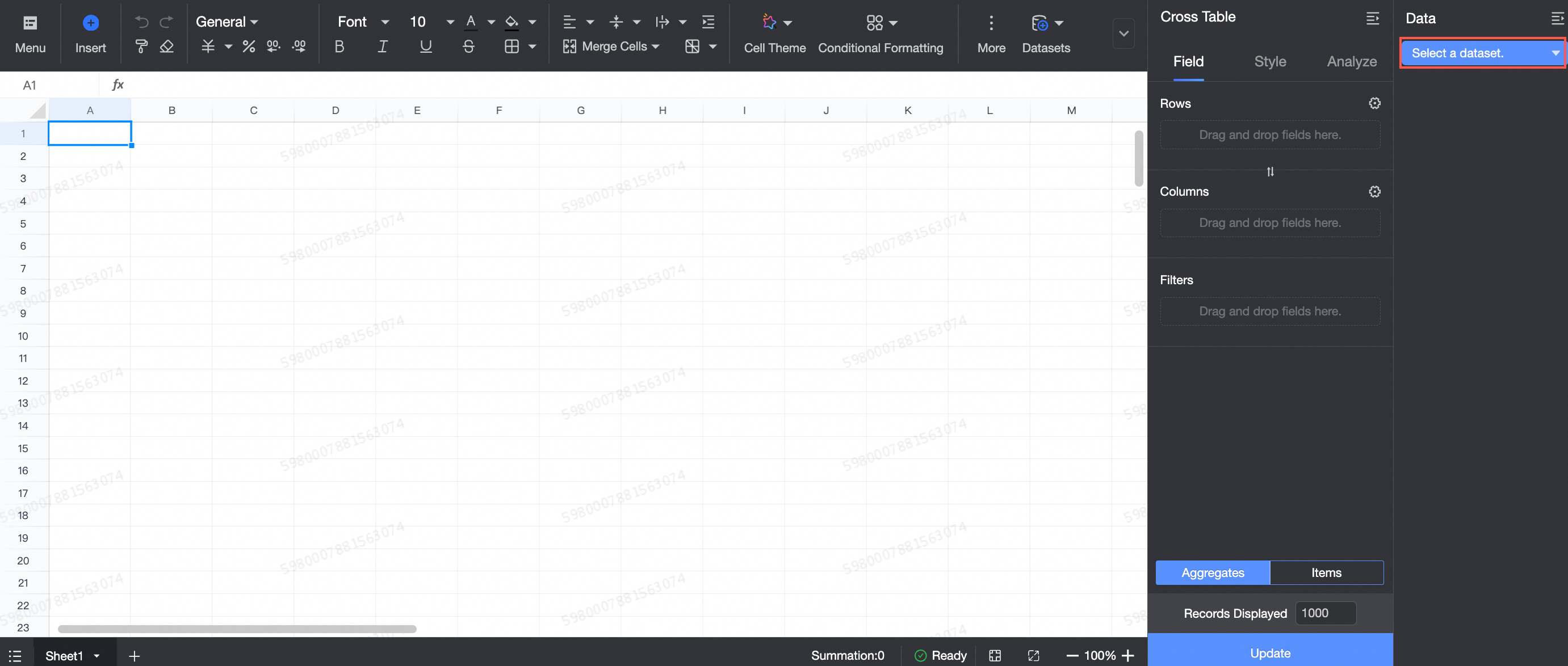
Method 4: Create from the dataset list
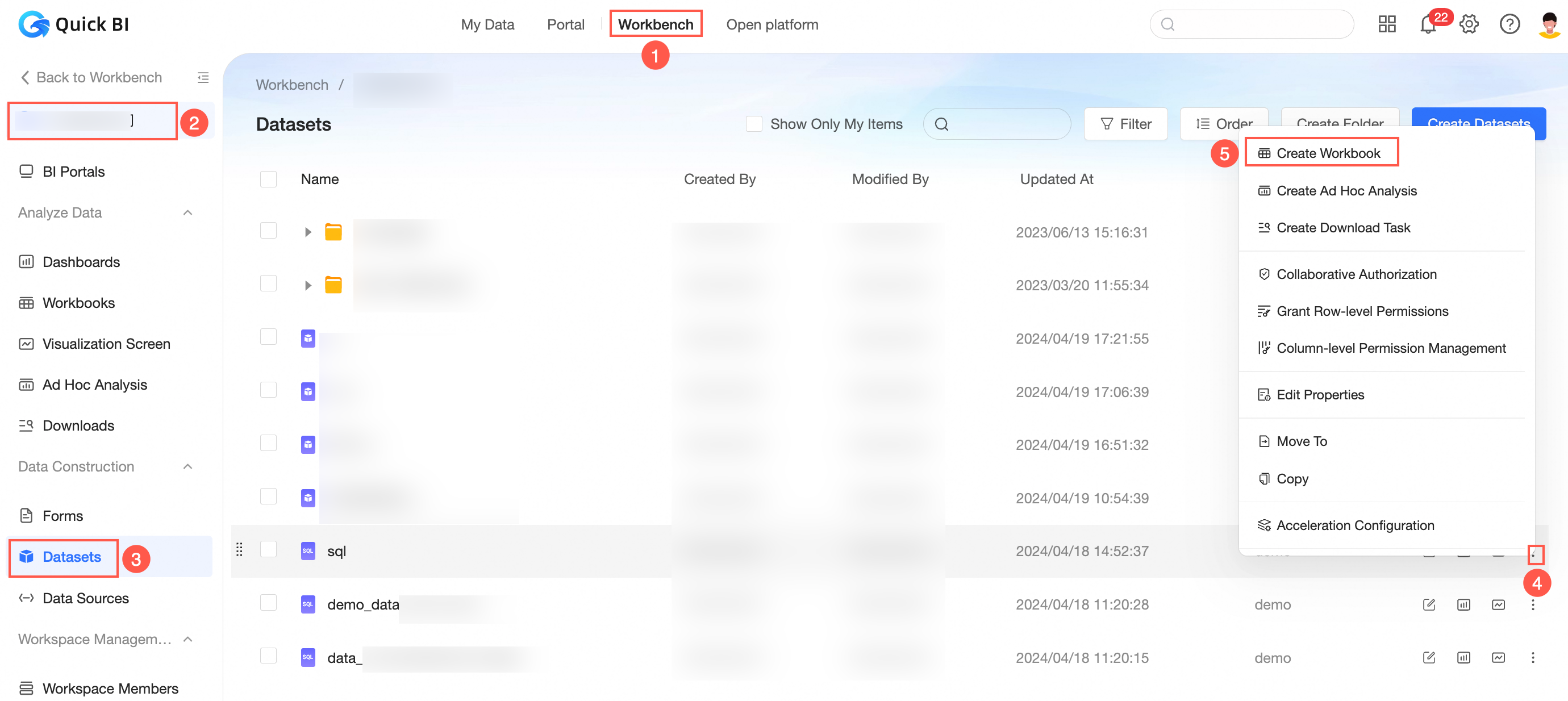
Method 5: Create from the Dataset Editing page
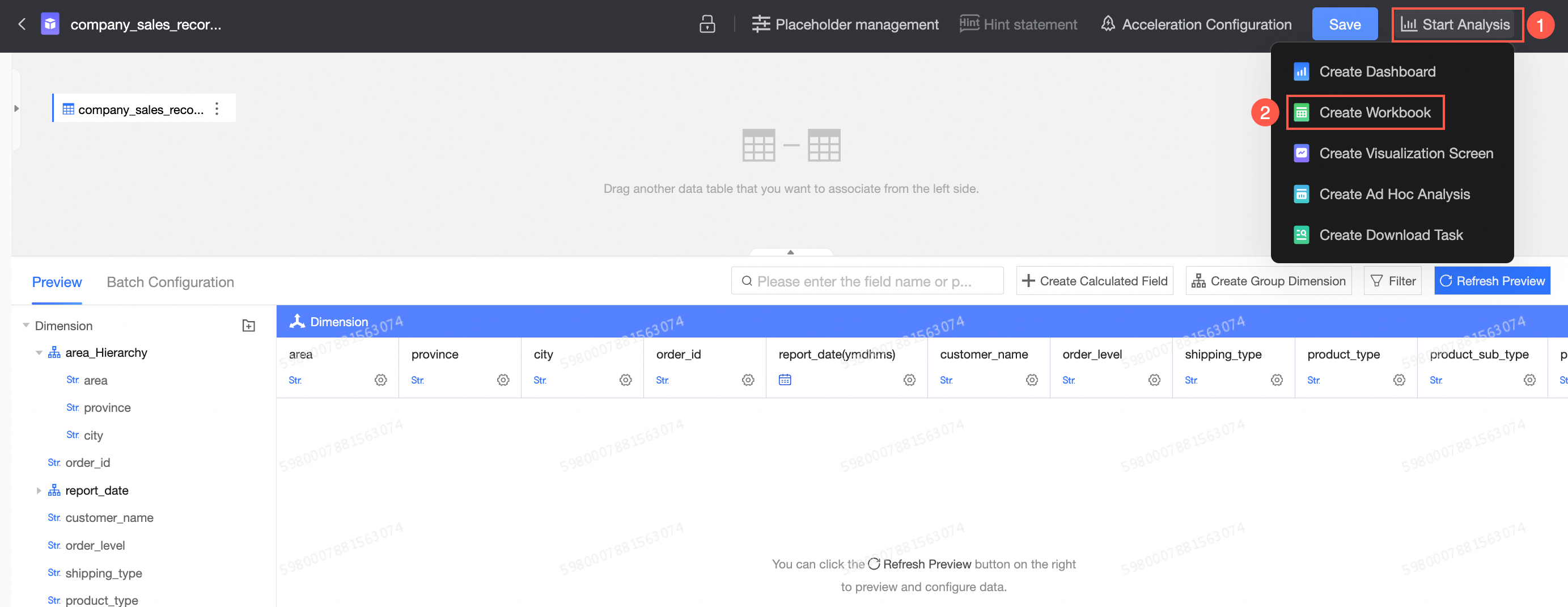
After creating a new workbook from an existing dataset using Methods 4 or 5, the right data panel will automatically load the corresponding dimensions and measures from this dataset. You can then drag them to the field area.
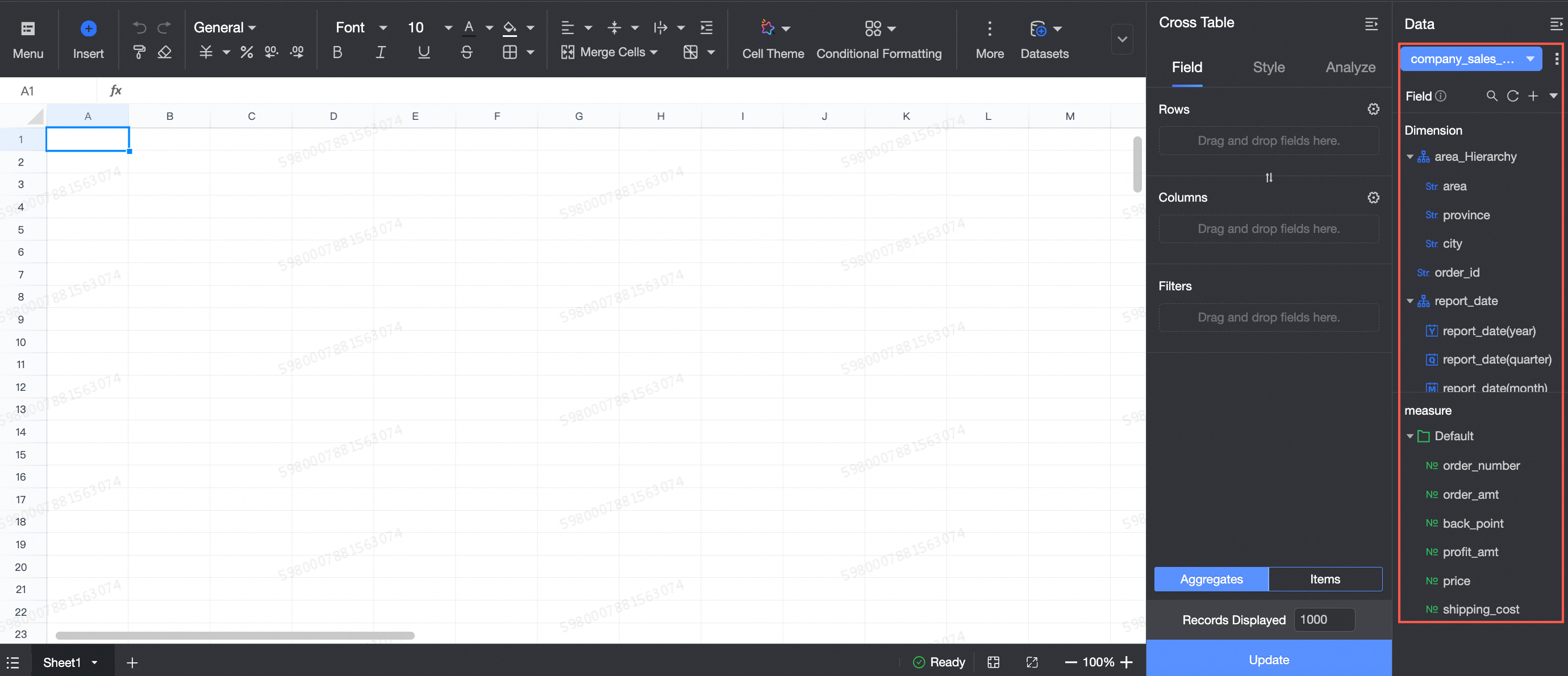
Data configuration
The following example uses Method 1.
Insert a Dataset Table.
On the workbook editing page, click Insert Dataset.
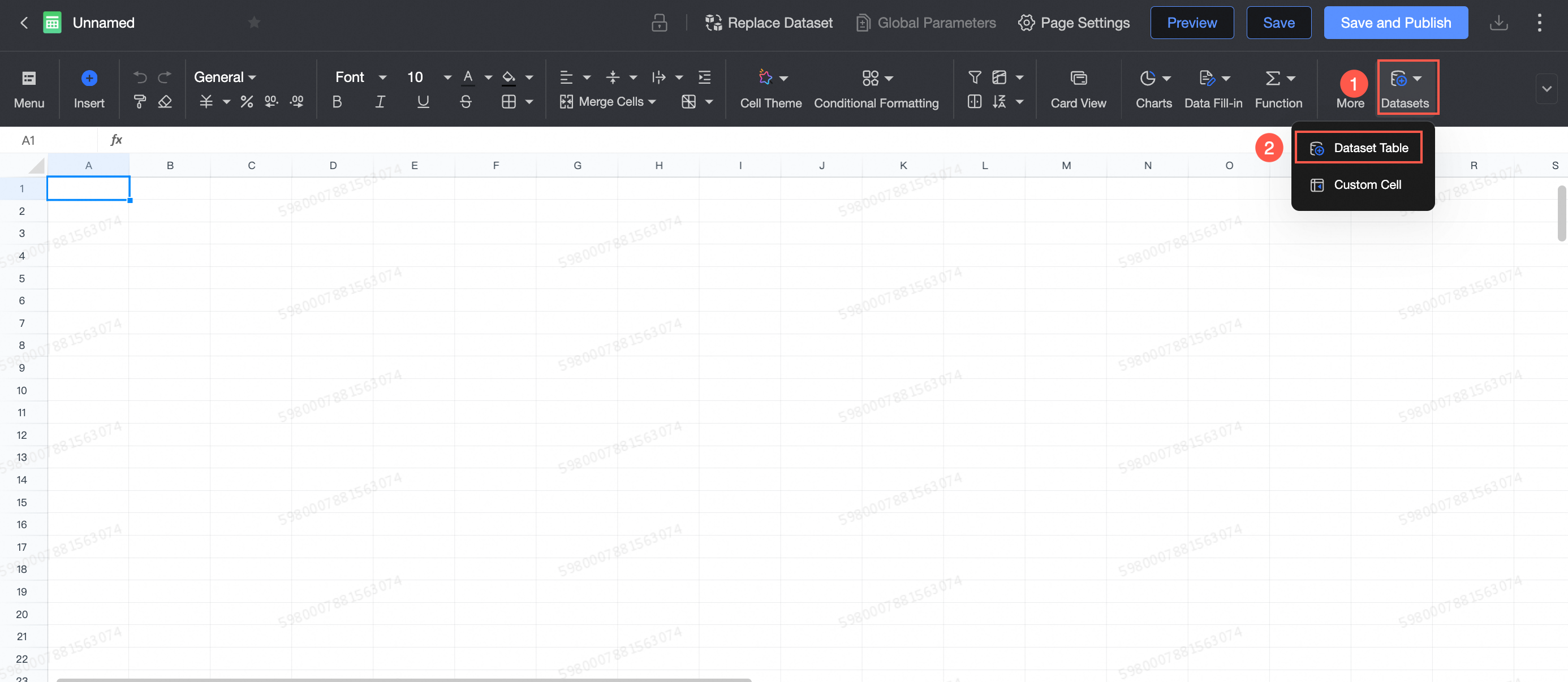
In the Data panel, click Select Dataset and choose the desired dataset from the dropdown list.
The fields from the selected dataset will appear in the Dimension and Measure areas.
On the Field tab, choose the necessary dimension fields and measure fields to add to the workbook.
Select and add data according to your specific needs.
Method 1: Add dimension fields to the Row and measure fields to the Column. Follow these steps:
On the Field tab, select the required dimension fields and measure fields:
In the Dimension list, locate Province, Product Type, and Product Package, and double-click or drag them to the Row area in sequence.
In the Measure list, locate Order Amount, Shipping Cost, and Profit Amount, and double-click or drag them to the Column area in sequence.
Click Update. The system will automatically refresh the workbook.
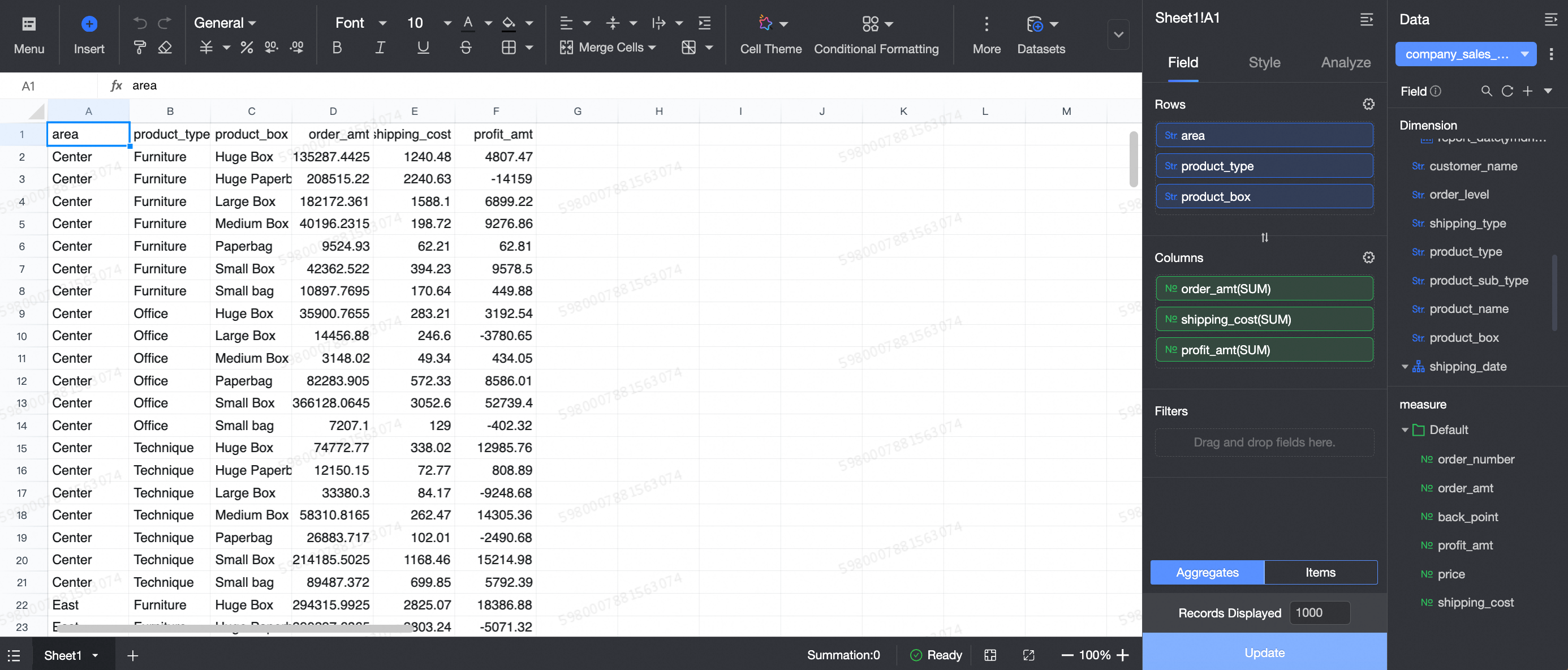
Method 2: Add dimension fields to the Row and both measure and dimension fields to the Column. Follow these steps:
On the Field tab, select the required dimension fields and measure fields:
In the Dimension list, locate Province, and double-click or drag it to the Row area.
In the Dimension list, locate Product Type, and drag it to the Column area.
In the Measure list, locate Order Amount, Shipping Cost, and Profit Amount, and double-click or drag them to the Column area in sequence.
Click Update. The system will automatically refresh the workbook.
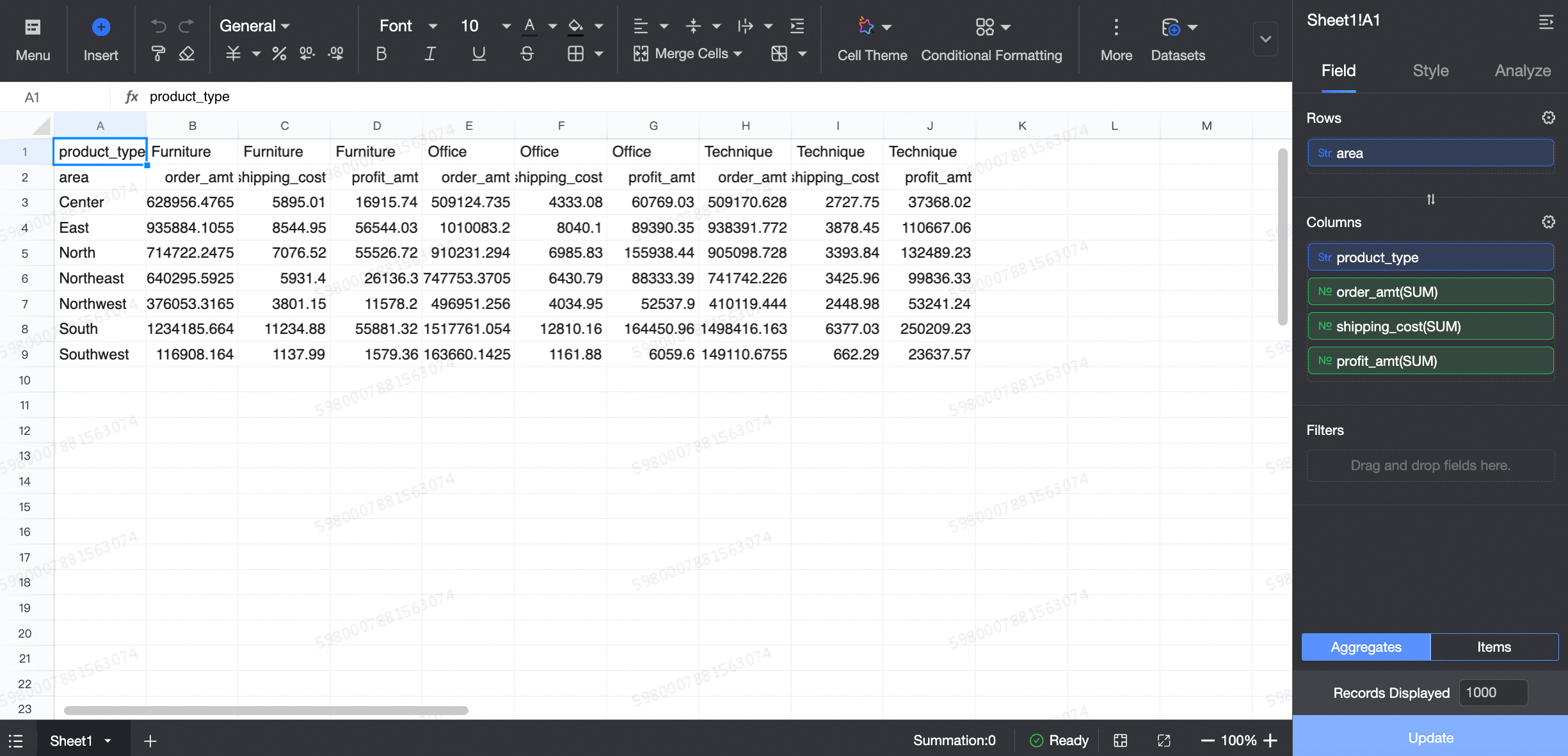
Method 3: Add measure fields to the Row and dimension fields to the Column. Follow these steps:
On the Field tab, select the required dimension fields and measure fields:
In the Dimension list, locate Product Type, and drag it to the Column area.
In the Measure list, locate Order Amount, Shipping Cost, and Profit Amount, and drag them to the Row area in sequence.
Click Update. The system will automatically refresh the workbook.
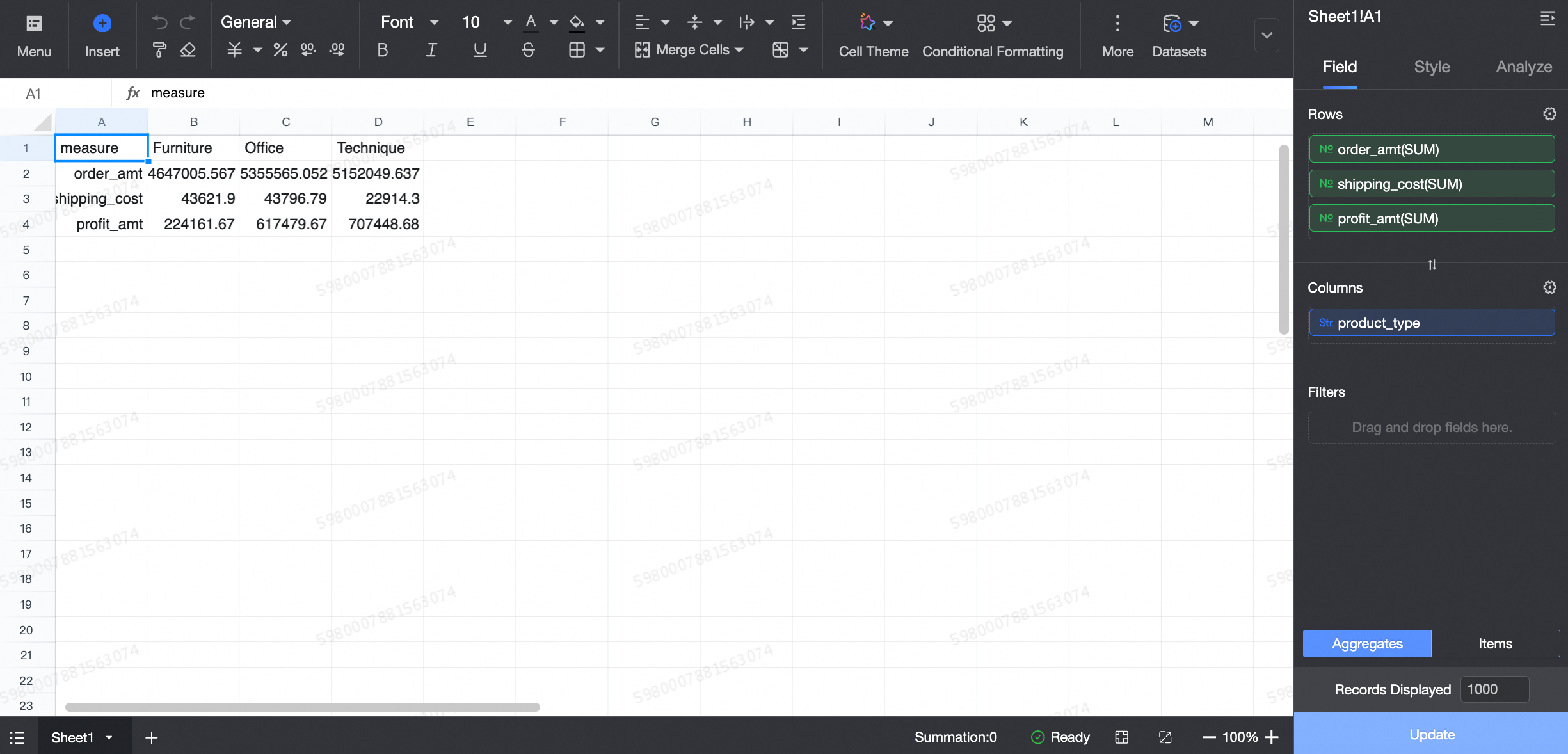
Format the fields as needed.
Configuration item
Description
Date display format
The default is automatic. Supports setting formats such as YYYY-MM-DD, YYYYMMDD, YYYY/MM/DD, YYYY年M月D日, MMDD, MM-DD, MM/DD, M月D日, and DDMMYYYY.
NoteOnly date fields support setting the date display format.
Alignment
The default is automatic. Supports setting align left, align center, and align right.
Sort
The default is no sort. Supports setting ascending, descending, ascending within group, descending within group, advanced sort, custom sort, and field sort.
NoteOnly measure fields support advanced sort.
Only dimension fields support custom sort and field sort.
Field display content
Supports setting display name.
Data display format
The default is automatic. Supports setting integer, retain 1 decimal place, retain 2 decimal places, percentage, percentage 1 decimal place, percentage 2 decimal places, and custom.
NoteOnly measure fields support setting the data display format.
When the custom format type is numeric or percentage, it supports setting the format of negative numbers as: -1234 or (1234), and supports checking Use thousands separator.
Aggregation method
Supports setting sum, average, count, remove duplicates count, maximum, minimum, population standard deviation, sample standard deviation, population variance, sample variance, and last day.
NoteOnly measure fields support setting the data display format.
Advanced calculation
Supports setting date accumulation, percentage, ranking, and comparison.
NoteOnly measure fields support setting advanced calculation.
Empty value display style
Dimension fields support setting the display style of empty value or empty string.
Empty value:
Display as '-'
String:
Display as '-'
Measure fields support setting the display style of empty value.
NoteCustom display of empty values can only consist of Chinese and English, numbers, and underscores, slashes, backslashes, vertical lines, parentheses, and brackets, and must not exceed 150 characters.
To set up filtering, drag the desired field to the Filter area and click the
 icon on the right side of the field to apply filters as needed. For more information, see Field Filtering.
icon on the right side of the field to apply filters as needed. For more information, see Field Filtering.Click Save.
NoteThe Save Workbook dialog box will appear when you save the workbook for the first time.
Name
Description
Name
Workbook name.
Location
Location where the workbook is stored.
To complete the workbook creation, click OK.
NoteThe workbook is equipped with Excel's auto-sum recognition feature, allowing you to select and view a subset of the data.
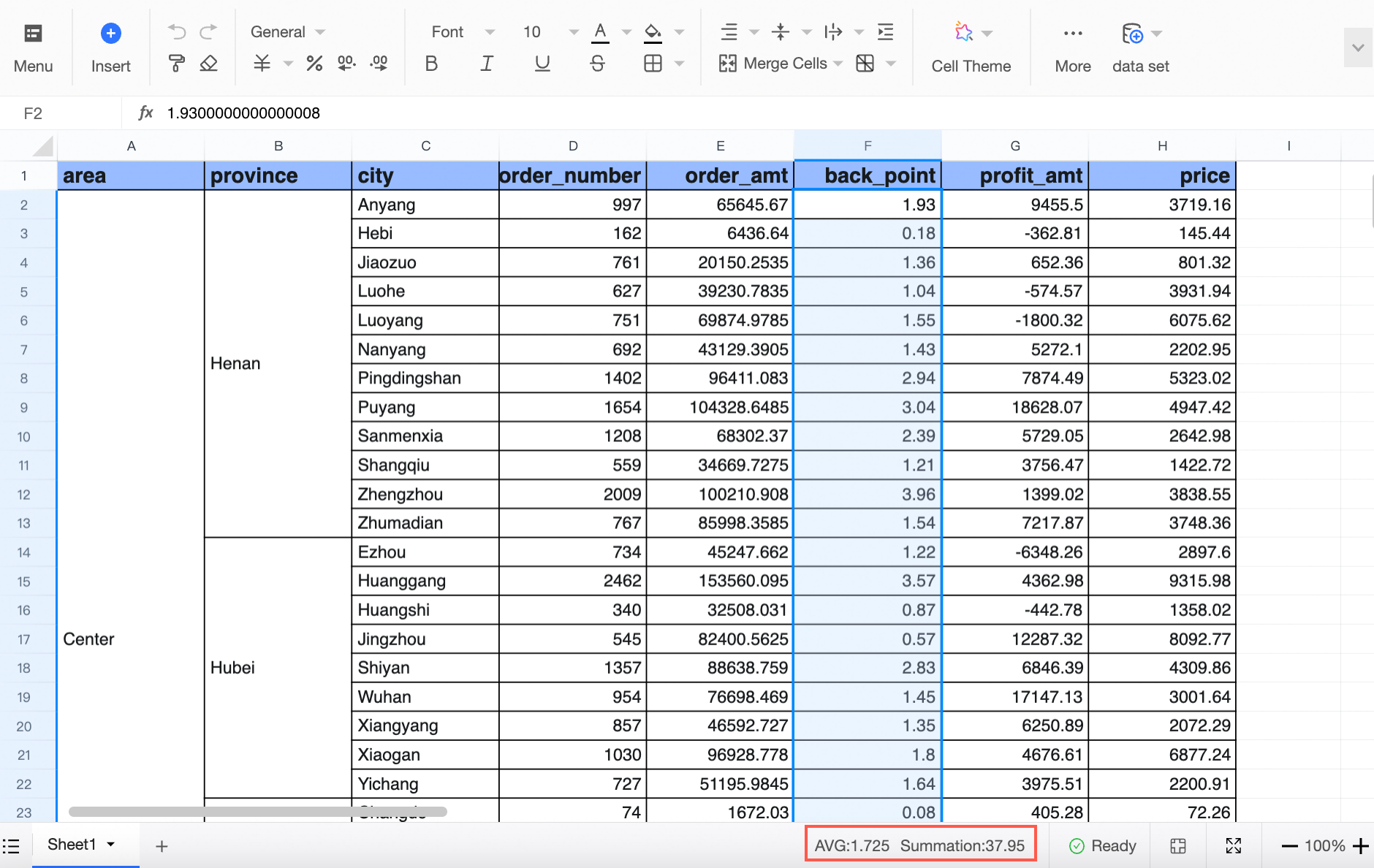
Insert Freestyle Cells
NoteFreestyle cells are only available in workbooks purchased separately in the Professional Edition and Pro.
(Optional) Set up the report format before inserting freestyle cells to suit your business scenario.
 Note
NoteMerge cells before dragging fields into them, as fields cannot be merged after being placed.
On the workbook editing page, click ①Dataset -> ②Freestyle Cell.
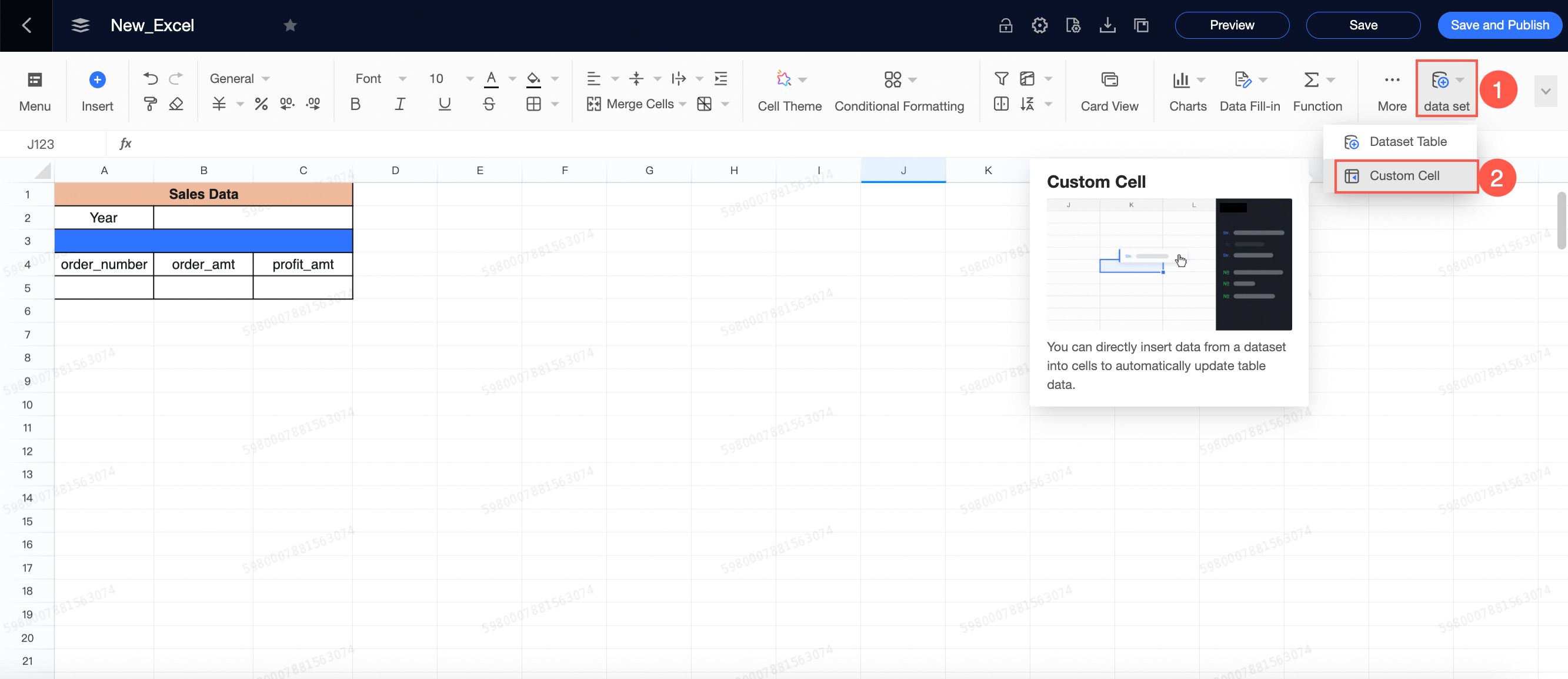
In the data panel, click Select Dataset and choose the target dataset from the dropdown list.
Select the required dimension fields and measure fields, then double-click or drag them to the workbook editing area.
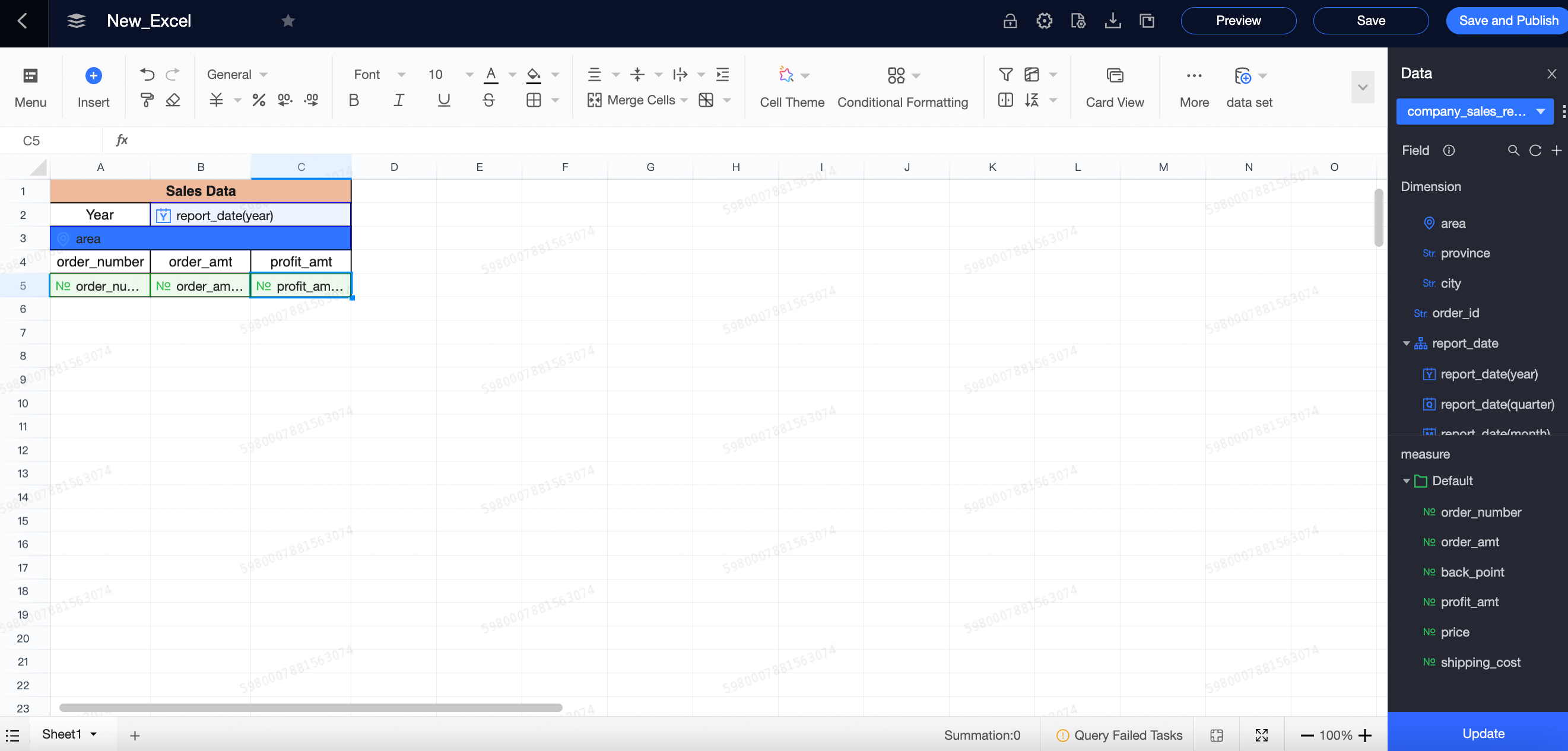
You can set the aggregation method, perform advanced calculations, associate fields, and delete them as needed.
Hover over the measure, click the
 icon, and enter the Aggregation Method settings as shown in the figure.
icon, and enter the Aggregation Method settings as shown in the figure.Measure fields allow for various aggregation methods such as sum, average, count, distinct count, maximum, and minimum.
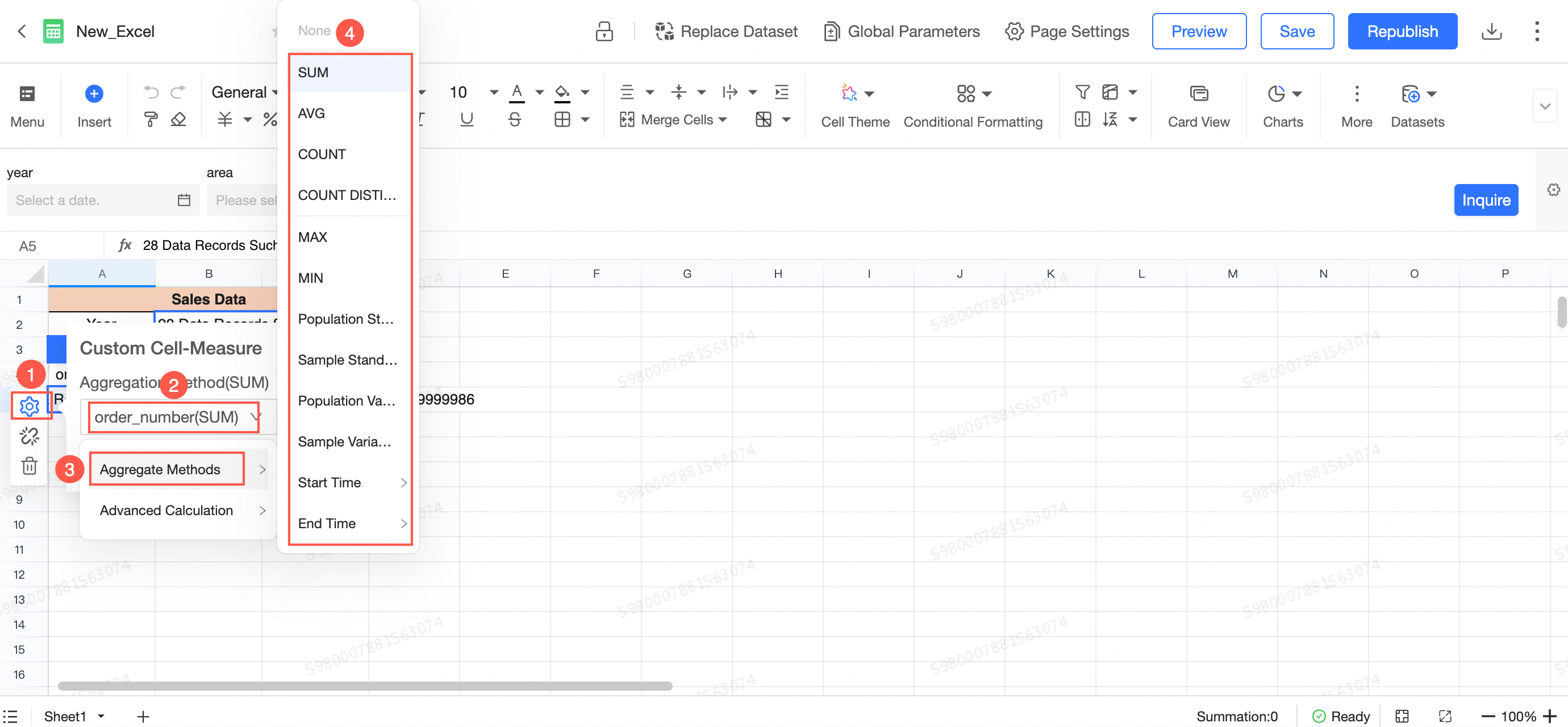
Hover over the measure, click the
 icon, and enter the Advanced Calculation settings as shown in the figure.
icon, and enter the Advanced Calculation settings as shown in the figure.Advanced calculations support functionalities like cumulative totals, percentages, rankings, and comparisons.
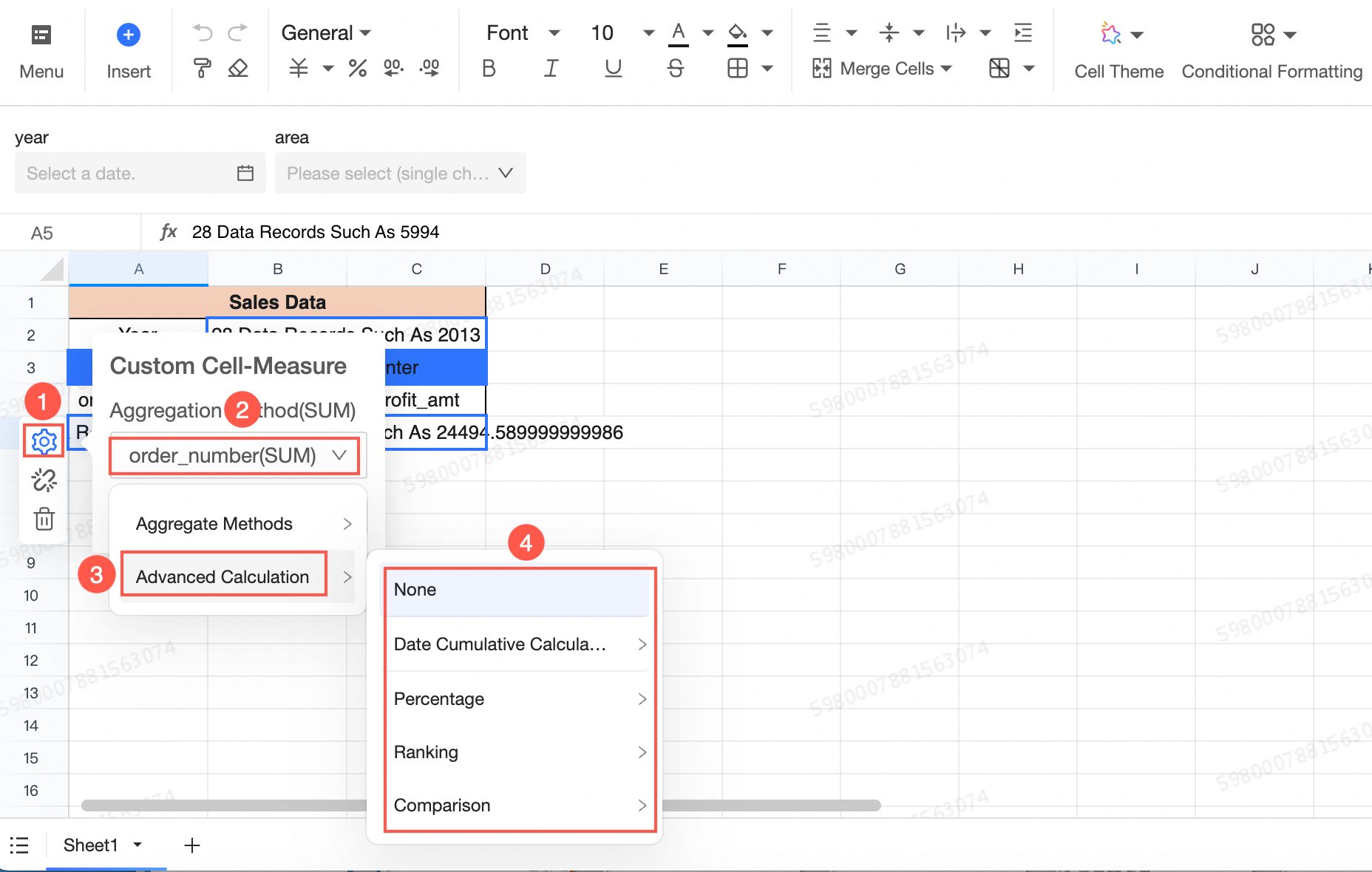
Configuration item
Description
Date accumulation
Date accumulation calculates the total data from the initial date to the current date. For more information, see Date Accumulation.
Percentage
Set the percentage format of the data.
Ranking
Supports setting ascending or descending order. For more information, see Data Ranking.
Comparison
Set the comparison of the data. For more information, see Configure the Comparison Feature.
You can associate fields accordingly.
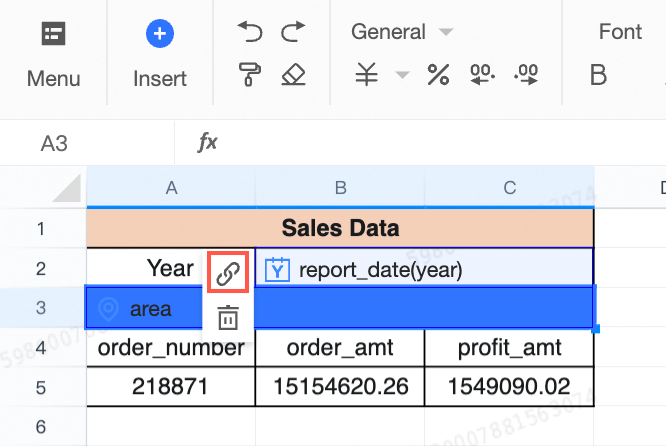
After clicking associate, enter the Associate Mode.
Hover over the confirm association button to switch between Aggregation and Detail data modes.
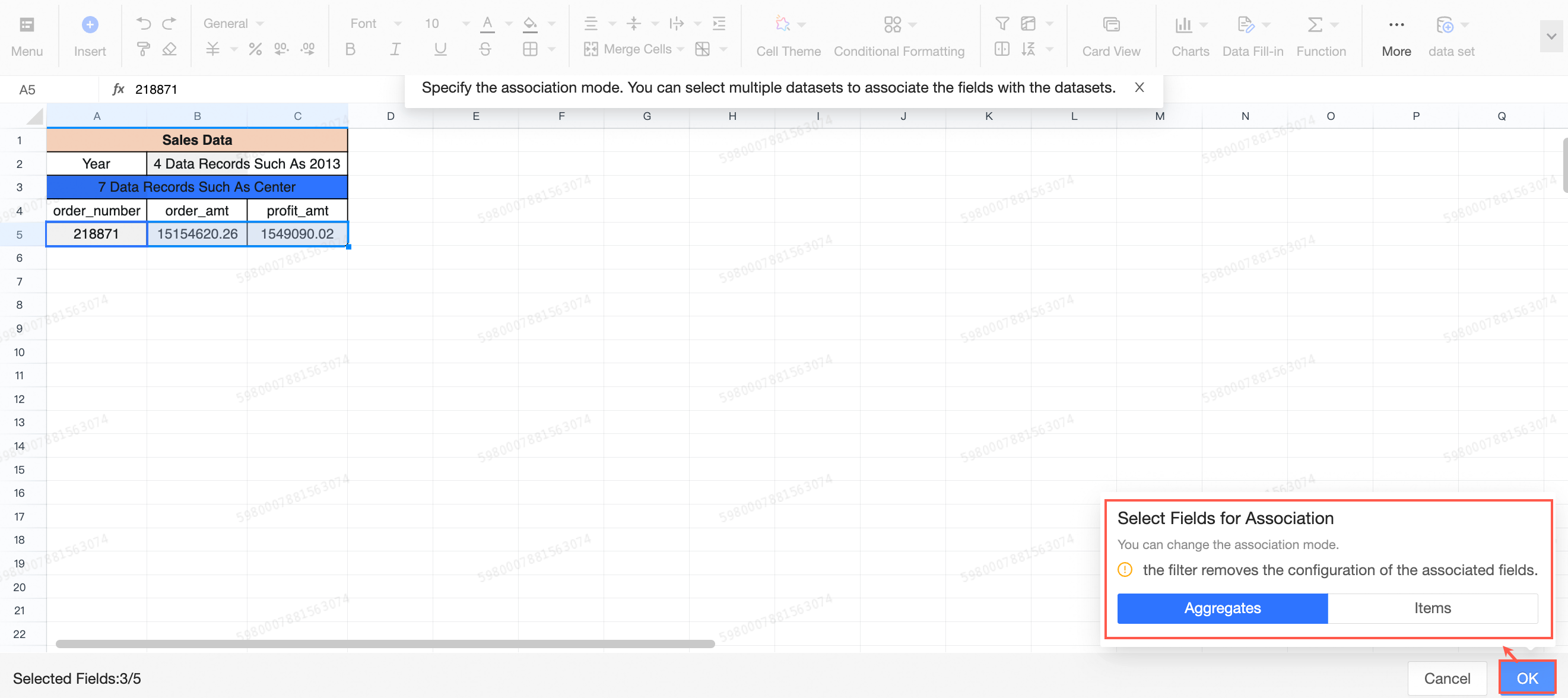
After confirming the association, the link is established. For instance, Order Date (year) is associated with Order Quantity, Order Amount, and Profit Amount.
You can also click Cancel Association to undo the link.
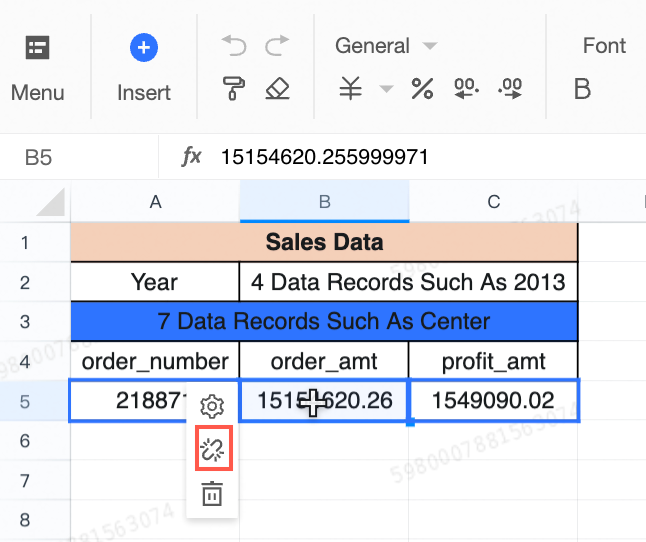
Delete any unnecessary fields as needed.
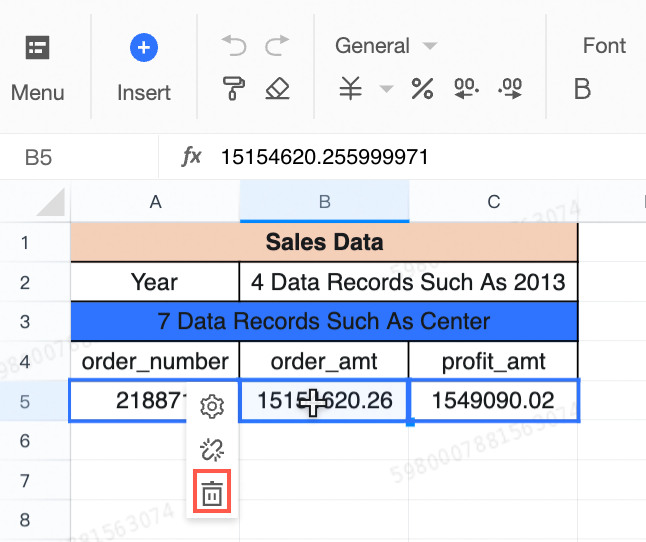 Note
NoteDimension fields can be set to associate or delete.
Measure fields can be set with aggregation methods, associations, or deletions.
(Optional) Add query controls as needed for your business scenario. In this example, add two query conditions: Year and Area.
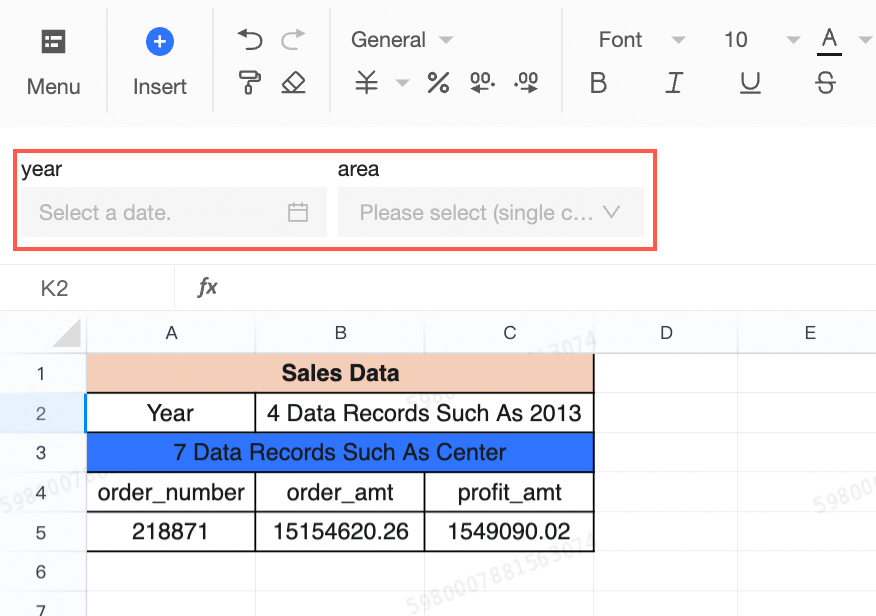
Click Update. The system will automatically refresh the workbook.
Click Save.
Create a card view.
Card view
Create split-column reports and indicator cards in visual analytics reports using the card view.
Card view is only supported in workbooks purchased separately in the Professional Edition and Pro.
Begin the configuration
In freestyle cell mode, the toolbar will display the card view feature icon.
Procedure
Click Card View to enter the card view creation page.

Create a card view.
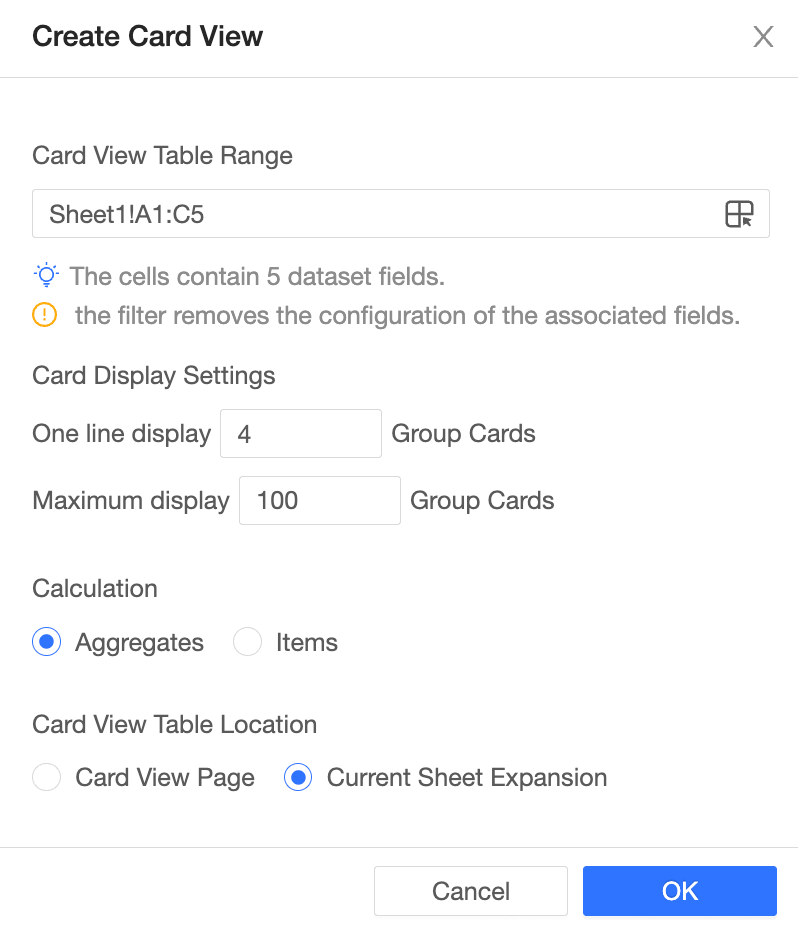
Select the base table for the card view and create constraints for the card view.
You can create a card view first and then manually select the data area.
Alternatively, select the data area first and then create a card view.
NoteFields from different datasets cannot be associated.
Configure the card display settings. You can customize the number of groups displayed per row and the maximum number of groups displayed.
Choose the calculation method, either aggregation or detail.
Select the location for the pivot table, either as a new Create Card View Page or as an extension on the Current Sheet.
In this example, select Create Card View Page.
Click OK.
Configure the card page view. If you chose Create Card View Page as the location, you can adjust the number of card groups per row, set filters, groupings, sorting, and enable detail viewing and searching on the card view page.

What to do next
For information on workbook style configuration and analysis configuration, see Style Configuration and Analysis Configuration.